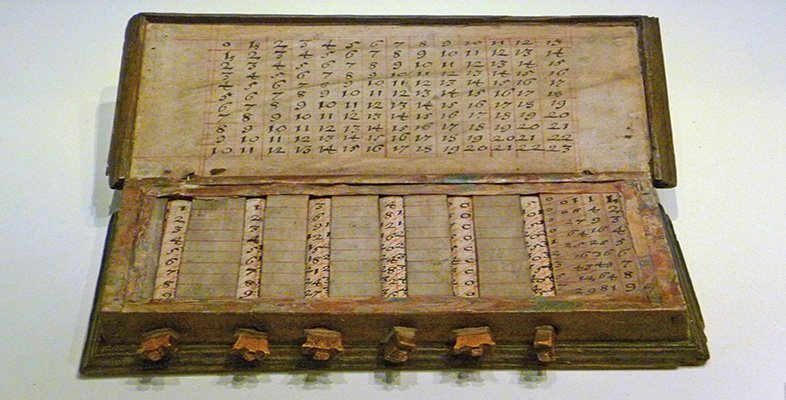
Description
Discover how intuitive geometry can be when you keep your assumptions simple and use your own logic and reasoning to set up your calculations.
This fundamentals course will introduce you to angle axioms, perimeter and area calculation strategies, coordinate geometry, 3D geometry, and more. This is the course that you should begin with if you're just starting your exploration of geometry on Brilliant.
Some prior experience with algebra is assumed, but you're in good shape to start this course if you can plot points and linear equations on a coordinate plane and use a variable to describe the relationship between the side length of a square and its area.
And, by the end of this course, you’ll be a skilled geometric problem-solver, well practiced at everything from proving the Pythagorean theorem to mixing algebraic and geometric techniques together on the coordinate plane.
Tags
Syllabus
- Angles: Measuring Angles
- Angles in Polygons: Discover the angles in and around a polygon.
- Polygon Angle Relationships: Find the interior angle sum for any polygon.
- Angles Made by Lines: Build up a toolbox of angle ideas to discover geometric principles.
- Triangle Sides and Angles: Relationships between the side lengths and angles within a triangle.
- Lengths: Lengths
- Perimeters: Trace the borders of your understanding by exploring the paths around shapes.
- Circumference and Arc Lengths: How long is a circle?
- Scaling Shapes: Uncover the properties of a scaled copy of an image.
- Scaling Lengths: Understand the relationship between lengths in scaled copies.
- Areas: From the circle to the pyramid, the area of many shapes can be found by building them out of rectangles.
- Reasoning About Area: How many squares does a shape cover?
- Polygon Areas: Use rectangles and triangles to find area formulas.
- Circle Areas: Build a circle from polygons to find its area.
- Scaling Areas: How does area change when a shape grows or shrinks?
- Pythagoras' Geometry: Discover the famous law of right triangles using the power of perspective, and learn how to apply it in several different contexts.
- The Pythagorean Theorem: Understand the relationship between side lengths in any right triangle.
- Squares and Roots: Express the side length of any square, given its area.
- Special Right Triangles: More information about the angles leads to more information about the side lengths.
- Using the Pythagorean Theorem: Sometimes a problem becomes easier to solve when you recognize a hidden right triangle.
- Surface Area: surface area
- Surface Area: How much paint do we need to redecorate a prism?
- Pyramids and Cones: Pinch your understanding of prisms to find the surface area of pyramids and cones.
- Volume: With area as a base, use symmetry and slice to find the volume of shapes.
- Volume: How many cubes do we need to build a cylinder?
- Pyramids and Cones: Through symmetry and slicing, discover the volume of these solids.

-
TypeOnline Courses
-
ProviderBrilliant
This fundamentals course will introduce you to angle axioms, perimeter and area calculation strategies, coordinate geometry, 3D geometry, and more. This is the course that you should begin with if you're just starting your exploration of geometry on Brilliant.
Some prior experience with algebra is assumed, but you're in good shape to start this course if you can plot points and linear equations on a coordinate plane and use a variable to describe the relationship between the side length of a square and its area.
And, by the end of this course, you’ll be a skilled geometric problem-solver, well practiced at everything from proving the Pythagorean theorem to mixing algebraic and geometric techniques together on the coordinate plane.
- Angles: Measuring Angles
- Angles in Polygons: Discover the angles in and around a polygon.
- Polygon Angle Relationships: Find the interior angle sum for any polygon.
- Angles Made by Lines: Build up a toolbox of angle ideas to discover geometric principles.
- Triangle Sides and Angles: Relationships between the side lengths and angles within a triangle.
- Lengths: Lengths
- Perimeters: Trace the borders of your understanding by exploring the paths around shapes.
- Circumference and Arc Lengths: How long is a circle?
- Scaling Shapes: Uncover the properties of a scaled copy of an image.
- Scaling Lengths: Understand the relationship between lengths in scaled copies.
- Areas: From the circle to the pyramid, the area of many shapes can be found by building them out of rectangles.
- Reasoning About Area: How many squares does a shape cover?
- Polygon Areas: Use rectangles and triangles to find area formulas.
- Circle Areas: Build a circle from polygons to find its area.
- Scaling Areas: How does area change when a shape grows or shrinks?
- Pythagoras' Geometry: Discover the famous law of right triangles using the power of perspective, and learn how to apply it in several different contexts.
- The Pythagorean Theorem: Understand the relationship between side lengths in any right triangle.
- Squares and Roots: Express the side length of any square, given its area.
- Special Right Triangles: More information about the angles leads to more information about the side lengths.
- Using the Pythagorean Theorem: Sometimes a problem becomes easier to solve when you recognize a hidden right triangle.
- Surface Area: surface area
- Surface Area: How much paint do we need to redecorate a prism?
- Pyramids and Cones: Pinch your understanding of prisms to find the surface area of pyramids and cones.
- Volume: With area as a base, use symmetry and slice to find the volume of shapes.
- Volume: How many cubes do we need to build a cylinder?
- Pyramids and Cones: Through symmetry and slicing, discover the volume of these solids.
Related Courses


John Napier

STAT 506: Sampling Theory and Methods

Mathematics for Machine Learning: Linear Algebra

Fundamental Linear Algebra Concepts with Python

Дискретная математика: подсчеты, графы, случайные блуждания

Essential Statistics

Statistics For Data Science

Differential Calculus

Math for Machine Learning (Portuguese)

6th-8th Grade Math: Practice & Review


 Online Courses
Online Courses  Brilliant
Brilliant
